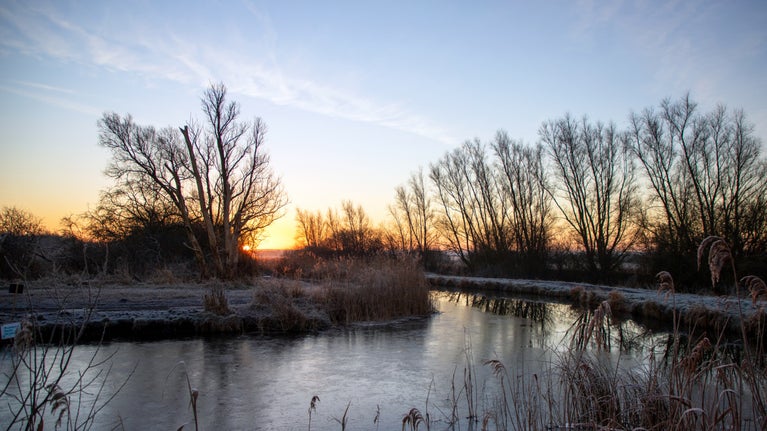
Caring for nature
Learn about our work on nature, climate and sustainability, and find out what you can do to make a difference.

Once, hay meadows were the very essence of a carefree English summer but since the 1930s, over 97 per cent of the UK’s hay meadows have disappeared, taking with them vital habitats and food sources for wildlife.
Acorn Bank is well known for its Grade I listed sandstone manor, watermill and beautiful walled gardens, but it also encompasses 185 acres of farmland and woodland. Wildflower meadows make up part of this, and recent work has converted a pasture into a rich hay meadow, which, in future years, will become a place for native flowers and wildlife to thrive again.
This restoration has been completed by the National Trust in partnership with Cumbria Wildlife Trust as part of the Meadow Makers Project – a project which aims to re-establish more meadows across the National Park. This was funded through the government’s Green Recovery Challenge Fund and the National Trust’s own charitable funds.
It was important to involve the tenant farmers from the beginning and make sure they were happy to manage the meadows to encourage wildflowers in the future.
Chloe Lumsdon, Assistant Nature Conservation Advisor for the National Trust who led on this meadow restoration, explains how the work began, “In 2019 we identified five meadows at Acorn Bank as possible fields to transform into species-rich grassland. It was important to involve the tenant farmers from the beginning and make sure they were happy to manage the meadows to encourage wildflowers in the future. The team carried out soil tests and botanical surveys and found that one field was already a fantastic habitat full of flowers like oxeye daisy, red clover, yellow rattle and orchids. This was a great find and we knew this field could be used as a seed source for new meadows at Acorn Bank.”

Currently, most new hay meadows across the Lake District are created by plug planting, which involves planting seedlings which have been grown elsewhere. This meadow, however, was created by using seeds from the donor meadow, whose grasses and flowers were cut and spread onto the new field. This method is called ‘green hay transfer’ and can only be done between neighbouring fields as seeds must be sown within an hour of collection. With the right preparations this method is highly successful as the plants are already adapted to the wet Cumbrian climate and soil type.
Claire Cornish, Grassland Officer at Cumbria Wildlife Trust said, “The National Trust is making really positive steps and it’s fantastic to be able to bring some of these meadows back to their full glory. Restoring grassland is a slow process but with more tenants on board it should start to make a real difference across these traditional farmsteads.”
The field at Acorn Bank was prepared last year and is expected to flower for the first time this summer with species such as oxeye daisies, meadow vetchling, red clover, yellow rattle and common knapweed. Although slow to establish, meadow grasslands become more colourful and plentiful as each year passes. In addition to their beauty, these grasses and herbs provide shelter and food for bees and butterflies plus birds, hedgehogs and bats which feed on insects. Acorn Bank’s meadow is eight acres so, once established, is likely house over a tonne and a half of insects and the long grassland will also provide valuable cover for nesting birds and mammals like brown hares.

Hay meadows also contribute to reducing the impact of climate change. A diverse flower meadow stores more carbon in its soil than a field containing single species, reduces soil erosion, holds moisture during a drought, drains well during high rainfall and improves water quality in the surrounding area.
Over the next decade, the National Trust and Cumbria Wildlife Trust will carefully monitor the new meadow using wildflower surveys alongside the restoration of more fields at Acorn Bank. The role of farmers in the whole process is crucial; they manage the fields in a way which encourages wildflowers to thrive, flowering and setting seed between May and August, before taking a hay crop at the precise time and allowing sheep or cattle to graze any leftover grass in the autumn.
The team is already undertaking the restoration of a further 12 hay meadows across the National Park throughout 2022. If you’d like to see how Acorn Bank’s is doing in its first summer, take a stroll along the footpath alongside it during the summer months.

Learn about our work on nature, climate and sustainability, and find out what you can do to make a difference.